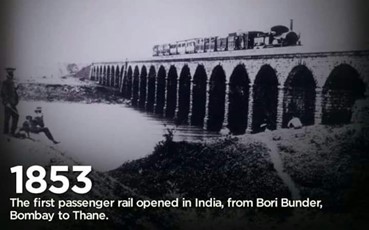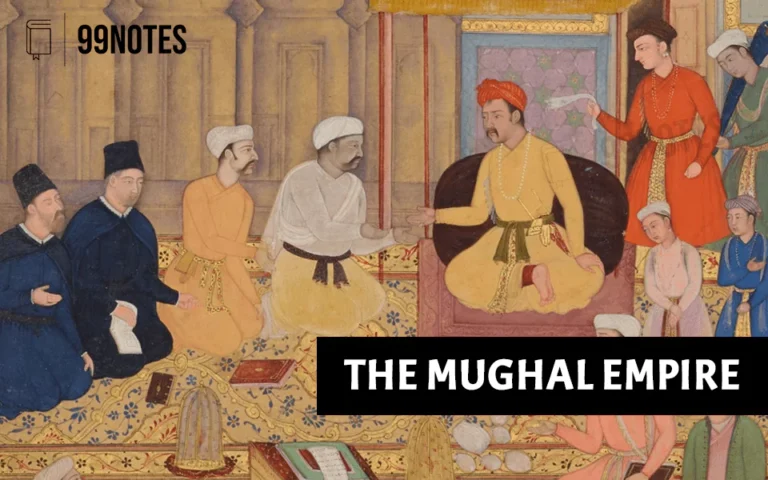Economic Impact of British Rule in India- Complete Notes for UPSC
Economic Impact of British Rule in India
The British Empire in India was highly organized administratively. The fundamental difference between the earlier conquest of India and the British conquest is that the earlier conquerors made no basic changes in the country’s economic structure and gradually became a part of it.
The British totally disrupted the traditional structure of the Indian economy. Besides, they remained foreigners in the land, exploiting Indian resources and carrying away India’s wealth.
The Indian economy transformed in the following ways:
1. De-industrialization: Ruin of Artisans and craftsmen
The British interests lay in maximizing their profits. Active efforts were made by both the East India company as well as under the Crown rule to maximize their profits at the cost of the Indian industry.
- One-way Free Trade Policy: The East India Company imposed a one-way free trade policy on India in 1813, which meant that the Indian exports were taxed, but not the British exports to India. It flooded the Indian market with British goods, particularly Cotton textiles.
- Industrial Revolution: Due to cheaper imported machine-made goods from Britain, the Indian Urban Handicrafts industry collapsed. Indian goods made with primitive technology could not compete with mass-scale production by powerful steam-operated machines.
- Loss of Royal Patronage: The disappearance of Indian rulers and their Courts, who were the main customers of these handicrafts, gave a major blow to these industries.
- The Ruralisation of the Indian cities such as Dhaka, Surat and Murshidabad also severely affected the artisans. The urban population barely formed 10% of the total Indian population by the end of the 19th Century.
- The absence of Technology in India: The decaying traditional industries were not accompanied by modern machine-based industries like in the case of Britain and Western Europe.
As a result, millions of rural artisans lost their traditional means of livelihood and were forced to work as farm labourers or petty tenants. The increasing pressure on Agriculture was the major reason for extreme poverty in British India.
2. The Impoverishment of The Peasantry and The Rise of New Landlordism
Intending to maximise its revenue, the British government introduced a Permanent settlement system in large parts of the country. We read about the revenue settlements in previous articles.
- The new system caused insecurity to the tenants, who lost all their traditional rights to land.
- Little efforts were made to improve the productivity of the land.
- The peasant had to face the triple burden of the Government, Zamindar and moneylender.
- The situation was no better in areas under the Mahalwari and Ryotwari systems.
This situation led to various Peasant uprisings, as discussed in our earlier articles.
3. Stagnation and Deterioration of Agriculture
Agriculture began to stagnate and even deteriorate due to overcrowding, excessive land revenue demand, and increasing indebtedness of cultivators. The extreme poverty of the cultivators left them with very little or no resources to improve agriculture, nor did they have any incentive to do so.
Sub-division and fragmentation of Agricultural land made it difficult to introduce modern technology.
In the latter half of the nineteenth Century, the commercialisation of Agriculture happened; since it was forced on the peasants, it further led to their exploitation. Commercial agriculture led to a shortage of food grains and exposed the cultivators to International market trends and fluctuations.
4. Poverty and Famines
The prevalence of extreme poverty, a consequence of British economic policies, became a major characteristic of British Rule in India. As discussed earlier, the characteristic features of this age are:
- The decay of indigenous industries and the failure of modern industries to replace them,
- high taxation,
- drain of wealth to Britain,
- stagnant agriculture and
- the exploitation of the peasants by the landlords and moneylenders.
The extreme poverty of the people culminated in a series of famines that devastated a large region of the country in the second half of the nineteenth Century.
- The first of these occurred in western Uttar Pradesh in 1860-61; it cost over 2 Lakh lives.
- The Bengal Famine: In 1865-66, a famine occurred in Orissa, Bengal, Bihar and Madras in which nearly 20 lakh lives were lost.
- Again, in 1868-70, 14 lakh persons died in Western Uttar Pradesh, Punjab, and Bombay.
- In 1876-78, possibly the worst famine in Indian history occurred in Madras, Mysore, Hyderabad, Maharashtra, and Western Uttar Pradesh.
- In 1896-97, draught led to a country-wide famine, which affected 9.5 crore lives and caused the death of over 45 lakhs.
- The famine of 1899-1900 quickly followed and caused the death of nearly 25 lakhs of persons.
- Another famine in Bengal in 1943 led to the loss of three million lives.

famine (public)
In addition, various plagues and flu spread during British Rule. For example, in 1918, Spanish flu spread across the world, and the soldiers returning from the World War led to its spread in India. It took more than 15 million lives, i.e. greater than 5% of the Indian population died.
India’s economic backwardness and poverty were man-made and were consequences of foreign rule, exploitation, and flawed agrarian and economic structure.
5. Development of Modern Industries
In the second half of the nineteenth Century, large-scale machine-based industries were established in India. It began with the Textile, Jute and Coal mining Industries. The first textile mill was set up in Bombay by Cowasjee Nanabhoy in 1853.
Other mechanical industries that began during the second half of the nineteenth Century and the beginning of the twentieth Century were Flour and timber mills, leather tanneries, woollen textiles, sugar mills, Iron and steel works, etc. However, all these industries had stunted growth.
Reasons that prevented Indian Industries from growing during the British Rule:
- Most modern Indian Industries were owned or controlled by the British capital. Foreign capitalists were attracted by cheap labour, raw materials, and a large market for their products.
- Indian capitalists struggled from the beginning against the power of British management agencies and Banks. Foreign banks dominated the banking system, and Indians found it difficult to get credit; even when they could borrow, they had to pay high-interest rates. In 1914, foreign banks held over 70 per cent of all bank deposits in India.
- British enterprises also took advantage of their close connections with British machinery suppliers, shipping, insurance companies, government officials, political leaders, etc., to gain a dominant position in the Indian economic system.
- Heavy or capital goods industries were essentially nonexistent, which barred the rapid and independent development of Industries. India also lagged in the steel, oil, metallurgy and chemical industries.
The nineteenth Century also witnessed the growth of plantation industries such as Indigo, tea and coffee. These plantations employed their workers in near slave-like conditions. These industries and plantations were of hardly any advantage to the Indians. The profits went out of the country, a large part of their salary bill was spent on highly paid foreign staff, and most of the equipment was purchased from abroad.
The only advantage that Indians got was the creation of unskilled jobs, where they were paid extremely low wages and worked in miserable conditions.
6. Trade policies
After the end of the East India Company’s monopoly in 1813 (see Charter Act of 1813), the British Indian government followed a free trade policy or unconstrained entry of British goods. Thus, not only were Indian industries not protected, but foreign goods were given free entry.
Import of Finished goods:
- A one-sided free-duty trade was imposed on India. As a result, India’s doors were opened to international commodities. India had to allow British goods free or at nominal tariff rates.
- Yet Indian goods that could still compete with British goods faced high import taxes upon entering Britain.
- Indian handicrafts were threatened with extinction due to the unfair and aggressive competition from British manufactured goods.
Export of Raw material:
- Insteadofexportingmanufacturedgoods,Indiawasnowcompelledtoexportrawmaterialssuchasrawsilkandcotton,whichBritishindustriesurgentlyneeded,orplantationproductssuchasIndigoandteaorfoodgrainsinshortsupplyinthe
- Opium, Indigo, sugar, and raw cotton were the major commodities exported by India in 1849. By 1920, exports remained overwhelmingly basic, unfinished commodities: raw cotton, jute manufactures (mainly gunny sacks), raw jute, raw skins and hides, and tea.
Thus, the economic policy of the East India Company after 1813 was guided by the needs of British industry. Its main objective was to transform India into a consumer of British manufacturers and a supplier of raw materials.
Development of means of communication
1. Railways
(Source: Ministry of Railways)
- Railways were introduced at a large scale in India during Lord Dalhousie’s
- India’s first passenger train ran between Bombay to Thane on 16 April 1853.
- The development of railways in India further strengthened the colonial nature of India’s economic development. It was primarily meant to serve the interests of foreign trade. The railway lines were laid primarily to link India’s raw material-producing areas in the interior with the ports of export.
- In a way, it brought about a commercial rather than an industrial revolution.
- The whole of the Railway was built with the British capital; most of the high-level expertise and railway equipment like machinery, railway lines and even coal, to an extent, was imported from Britain.
- There were some unintended consequences; they created a trading system that raised grain prices. It made transporting food grain for exports easier, which aggravated the problem.
- The introduction of Railways also caused the spread of epidemic diseases such as cholera and influenza.
- Bal Gangadhar Tilak commented that building railways and other allied infrastructural facilities like roads, telegraphs, etc., was just like decorating another’s wife.

2. Post and Telegraph
- The postal service was initiated by Warren Hastings under the East India Company in 1766. It was called the company’s mail.
- Later, it was modified into service under the Crown in 1854 by Lord Dalhousie.
- The telegraph was introduced in 1851; it became necessary due to the Afghan war and the impending war with Burma.
- Thus, Telegraph lines were rapidly developed by Lord Dalhousie due to strategic reasons. Before 1855, major lines were completed.
- The telegraph lines played a crucial role in suppressing the 1857 revolt.
- Even though these means of communication helped strengthen imperial control, they also played an important role in spreading patriotic ideas and national awakening, strengthening the national freedom movement.
Labour Policies
Indian Industry mainly employed two types of labourers:
- Industrial labour, such as in Railway and cotton mills,
- Plantation workers.
The conditions for both plantation workers as well as those employed in modern factories in the 19th Century were miserable.
- They had to work for 12-16 hours a day with no weekly day of rest.
- Even women and Children were forced to work the same hours as men.
- The workers got extremely low wages, and the factories were overcrowded and unhygienic, with bad lighting and air ventilation.
The British manufacturers feared that the cheap Indian labour would make their products less competitive, hence pressing for labour reforms in India.
- In 1881, the first Factory Act was passed under Lord Ripon. It dealt mainly with Child labour. It stated that children between 7-12 years would not work for more than 9 hours a day.
- The second Labour Reform Act was passed in 1891. It had provision for a weekly holiday for all workers. Working hours for women were fixed at 11 hours a day; for men, it was still unregulated.
- Neither of these acts applied to British-owned tea and coffee plantations. Here, workers were kept virtually as slaves.
- In 1929, the Royal Commission on Labour or the Whitley Commission, was set up to investigate the working conditions on plantations in India.
- Better labour laws were passed in the twentieth Century under the pressure of the rising trade union movement. However, the condition of Indian workers remained extremely depressed and miserable.
The Indentured Labours
The British employers also introduced a system of Indentured Labour. Indentured labour is bonded labour contracted to work for a specific time without payment to pay off his passage to a new country or home. In such a system, labour was hired under a contract, which promised return travel to India after they had worked five years on the employer’s plantation.
This system became popular due to various reasons:
- Slavery was formally abolished by the British in 1833. They were in dire need of a system for hiring cheap labour for their plantations in the American and African colonies. The system of indentured labour provided the perfect opportunity.
- Due to huge unemployment in India, many workers were willing to move to different parts of the world in search of better opportunities to work as indentured labour.
- Rising indebtedness in India: In the mid-19th Century, India experienced a decline in the cottage industries, land rents rose, and lands were cleared for mining and plantations. As a result, the peasants became deeply indebted and were forced to migrate.
Migration from India:
In the 19th Century, Lakhs of Indian and Chinese workers went to work on plantations, in mines, and on road and railway construction projects around the world as indentured labourers. Most of them are from the United Provinces (present Uttar Pradesh), Bihar, Central India and the dry districts of Tamil Nadu.
These labourers mainly went to various destinations, such as:
- Caribbean islands (mainly Trinidad, Guyana & Surinam), Mauritius & Fiji.
- Close home, Tamil migrants went to Ceylon & Malaya.
- They were also recruited for tea plantations in Assam.
How were the indentured labourers recruited?
Recruitments were done by agents engaged by employers who were paid a small commission. Many agreed to take work, hoping to escape poverty or oppression in their home villages.
- They tempted the prospects with false info about the final destination, modes of travel, nature of work, and living-working conditions.
- Often, people were not even told that they were to embark on a long sea voyage.
- Sometimes, unwilling migrants were forcefully abducted.
The result was that by the end of the 19th Century, indentured had been described as a ‘new system of slavery’. On arrival, living conditions were harsh, with few legal rights.
In such a situation, workers discovered their own way of survival. Some escaped to the wild, though they had to face severe punishment if caught. Others developed new forms of individual and collective self-expression, blending different cultural forms, old and new. For example:
- In Trinidad, the Annual Muharram procession was transformed into a riotous carnival called Hosay (named after Imam Hussain) in which workers of all races & religions joined.
- Protest of religion Rastafarianism (made famous by Jamaican Reggae star Bob Marley)
- ‘Chutney music‘, popular in Trinidad & Guyana, is another creative contemporary expression of the post-indenture experience.
Most indentured workers stayed on after their contracts ended or returned to their homes after a short spell in India.
From the 20th Century, Indian nationalists began opposing the system as abusive and cruel. It was abolished in 1921, but its social impact is still felt. Several decades afterwards, descendants of Indian indentured workers, often thought of as ‘coolies’, remained an uneasy minority in the Caribbean islands. Some of the Noble Prize winners VS Naipaul’s early novels capture their sense of loss & alienation.
British policy on Press freedom
The modern press started developing in India with the introduction of the printing press by the British. Charles Metcalfe, known as the liberator of the Indian press, freed the restriction on the press in 1835.
The educated Indians immediately realised the importance of the press in forming public opinion and influencing government policies through criticism and censure.
The press gradually became an important weapon of freedom fighters. The use of the press by nationalists to arouse national consciousness turned the British against the Indian press and led to the passage of the Vernacular Press Act of 1878. This put serious restrictions on the freedom of Indian-language newspapers.
Due to vehement opposition, Lord Rippon finally repealed it in 1882. After 1905, aggressive boycotts and Swadeshi protests resulted in the passing of restrictive press regulations in 1908 and 1910.









